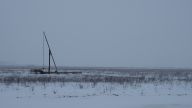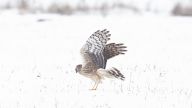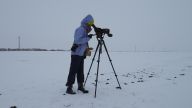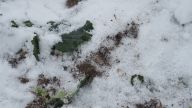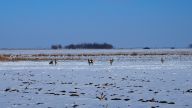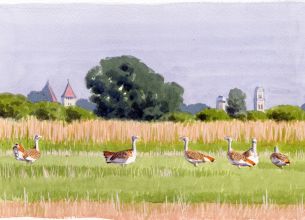The rehabilitation of the reed lake, a swamp that had become eutrophicated in the Culișer meadow, located in Salonta, Bihor county, has been carried out in the past 3 years within our project based on cross-border public-private partnership.
Great Bustards: Winter Census | Salonta, Romania

21 January 2019
January 2019 - the 3rd edition of the East-Pannonian Great Bustard population synchronous census in Central Europe, coordinated by our colleagues from Austria and Hungary.
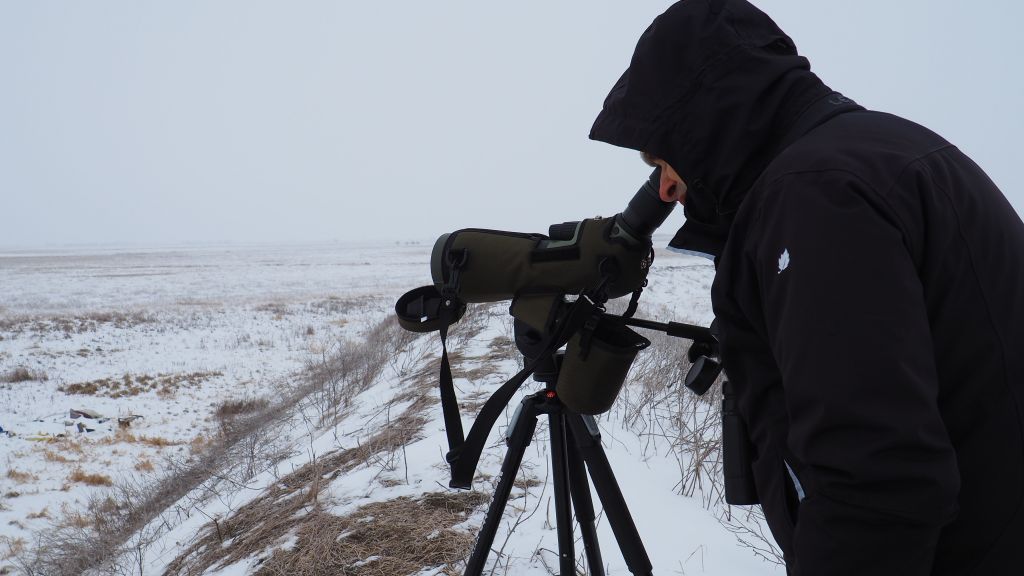
In January 2019, the 3rd edition of the East-Pannonian Great Bustard population synchronous census underwent in various countries from Central Europe.
We share a descriptive census log of our day.
***
🔭 2 observators / 10 January 2019
📌 Salonta (Bihor County), Romania
🕙 10am
Cloudy, windy, freezing and foggy. In areas, the snow depth is up to 30 cm. We cannot find the bustards. Tens of roe deer. Rapeseed, the only green food available this time of year, is covered by approximately 5 cm layer of snow. We notice the green leaves dug out of the snow by the deer. My colleague is wondering whether they migrated. During migration, there’s always the danger of being poached, but also to collide with medium voltage power lines. Especially, on foggy weather. I look around. On the left, I see a row of electricity poles, and another one on the horizon. I reckon that it’s not easy to be a bustard here and now.
🕦 10.30am
We observe a group of 17 females and a juvenile. Our search continues. After a few minutes, we notice the same group in flight. In less than a minute, the male adults follow them. They’re 8. In total, 26 bustards. We are glad they are still here and that they’re not less since our last field observation. After a few pictures and shaky videos, we carry on. Perhaps we can find more.
🕚 11am – 3pm
We cross the area. We spot a skylark left here for the winter and 7 partridges. Amongst raptors we saw: Hen Harriers, Common Buzzards and a White-tailed Eagle. There isn’t much movement and you get the feeling that the landscape froze and the time slowed down. Winter on these saline soils is not easy, but it has a unique charm. While we were walking, we could really feel the elements. And just as we got back to the car after going 2 km against the wind, the sun came out. Then, we saw the puszta of Salonta in a different light.
On 10 January, we counted in the Salonta area 26 bustards – 17 females and 9 males. This is a cross-border population with territories that spread between Salonta (Romania) and Mezőgyán (Hungary) and it is the ONLY viable bustard population of Romania. In Hungary, 1.431 bustards were registered as a result of several conservation projects implemented over the last decades and only 6 in Serbia. Thus, the conservation measures for our small population couldn't be more relevant now. Fortunately, the bustards are one of the main reasons why our project, The Nature Corner, exists.
Text and photo credit: Milvus Group

